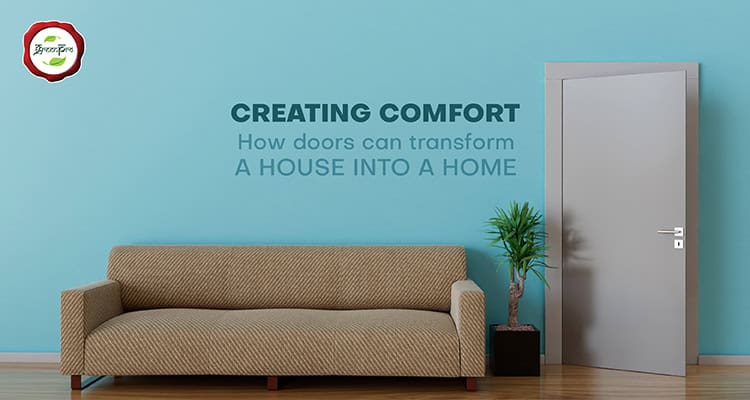The significance of a door extends far beyond its functional role as an entry or exit point. In the realm of home design and emotional well-being, doors play a pivotal role in shaping the essence of a house and turning it into a home.
A door is a canvas for personal expression, reflecting the homeowner’s style, taste, and individuality. From intricately designed wooden doors that evoke a sense of tradition to modern, minimalist doors that embrace contemporary aesthetics, the choice of a door becomes an extension of one’s personality. This personal touch creates an immediate sense of belonging and ownership.
Doors serve as architectural focal points, defining the visual narrative of a home. Grand entrances with ornate doors can elevate the entire facade, setting the tone for what lies beyond. A carefully chosen door design contributes to the overall curb appeal, making a lasting impression on visitors and residents alike.
The act of opening a door is symbolic – it’s an invitation, a gesture of welcome. A well-crafted, inviting door creates a positive first impression, signaling warmth and hospitality. Whether it’s a sturdy wooden door that exudes timeless charm or a brightly colored door that adds a playful touch, the entrance sets the stage for the welcoming atmosphere of a home.
Doors play a crucial role in spatial organization, delineating areas within a home. The transition from room to room is marked by doors, contributing to the flow and functionality of the living space. Thoughtfully placed doors can enhance privacy when needed while maintaining an open, interconnected feel when desired.
The simple act of closing a door can provide a sense of security and privacy, creating a sanctuary within the larger home environment. Bedrooms, bathrooms, and personal spaces are defined and safeguarded by doors, fostering a sense of emotional security and comfort for the inhabitants.
Doors contribute to the acoustic harmony of a home. Solid doors act as barriers, preventing the intrusion of noise from one room to another. This feature is especially vital in creating a peaceful and serene environment, allowing different family members to engage in various activities without disrupting one another.
The creaks and sounds of a familiar door become a part of the tapestry of memories within a home. Each opening and closing encapsulate moments of daily life – the hurried exit in the morning, the joyous return in the evening. Over time, these sounds become ingrained in the emotional fabric of the home, creating a sense of continuity and nostalgia.
Doors adapt to the lifestyle and evolving needs of a household. Sliding doors maximize space, pocket doors offer seamless transitions, and French doors bring a touch of elegance. This adaptability ensures that doors not only serve their functional purpose but also enhance the overall livability of a home.
Glass doors or doors with windows allow natural light to permeate indoor spaces, fostering a connection to the outdoors. This infusion of sunlight not only enhances the visual appeal but also contributes to a healthier and more vibrant living environment.
As a lasting fixture in a home, a door becomes a symbol of continuity and stability. While the interiors may undergo transformations over the years, the doors remain, witnessing the ebb and flow of life within the confines of the home. This continuity creates a sense of grounding and permanence.
In conclusion, a door is more than just a functional element; it is a design statement, a guardian of privacy, and a silent witness to the unfolding stories within a home. The careful consideration of door aesthetics, functionality, and placement can significantly impact the overall ambiance, turning a house into a haven of comfort, memories, and emotional well-being.
